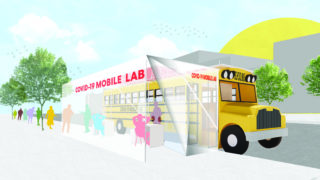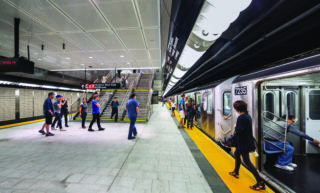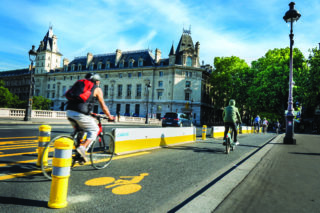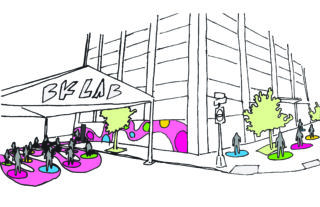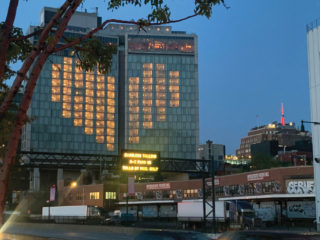Evolutionary biology teaches us that in times of great environmental stress, species that cannot adapt go extinct. The dinosaur’s millennia of dominance were snuffed out in the relative blink of an eye by its inability to adapt to suddenly colder temperatures after an asteroid struck the Earth and kicked up enough dust to partially blot out the sun. The same Darwinian principles tell us that variation, diversity, and mutability within a species are the keys to survival, whether facing gradual environmental changes or sudden stressors. Any one individual’s adaptability matters less than the species-wide variation that, through natural selection, enables species survival. “Survival of the fittest,” a phrase Darwin himself never used, is better expressed as “species survival through diversity.”
What if we applied these lessons of evolutionary biology to our ecosystem of urban transportation? What would that teach us about the future of such systems, especially under the extreme stresses of COVID-19?
If we look broadly at transportation history, we see thousands of years of movement based on people walking, riding horses, and using simple carts and wagons to move themselves and their goods. Then, around the mid-1800s, railroads became the first new transformative transportation technology almost since the wheel itself. In evolutionary biology terms, railroads were a new species, with clear ancestors, but fundamentally different. Then, starting in about the 1870s, over a period of less than 50 years, we saw an explosion of new transportation forms: the electrified streetcar, the elevated urban railway, the subway, the bicycle, the zeppelin, the airplane, and, of course, the automobile. In evolutionary biology, the pattern of such explosions of species diversity have happened periodically throughout time.
Starting in the 1920s, one transportation species began to dominate: the automobile. By the 1950s, cars and trucks had beat out their competition (with the possible exception of the airplane for long-distance passenger travel). Some of this was due to “natural” competitive advantages—cars are fundamentally more adaptable. But some of it was the result of the anticompetitive practices of car manufacturers and oil companies, who bought up streetcar companies and shut them down, or passed federal legislation that funnels gas taxes into highway infrastructure. The urban streetcar, a species that briefly dominated nearly every major American city, went virtually extinct. In places like New York, where the subway had gained a strong foothold before the car came to dominate, the species (subway) survived, but its growth stagnated, and government subsidy was required to protect its endangered state.
Between 1920 and 2000, virtually no new mode, nothing that could be called a “new species” in this analogy, was introduced. By the new millennium, America’s transportation ecosystem had become a largely stagnant car monoculture. This created problems—environmental impact, dependence on fossil fuels, growth of sprawl, social disconnection, millions of acres devoted to parking, time wasted in lengthy commutes—that were acknowledged as unwanted consequences of an automobile monoculture. Then, beginning in the early 2000s, some new species of transportation, as well as some reborn or mutated old ones, started to appear. Bike-sharing, ride-sharing, and ride-hailing services gave us new takes on old technologies. Electric bikes, electric scooters, and a host of other variations on micro-mobility (the term for short-distance individual vehicles) gained a foothold in the ecosystem. Cities like London reinvested in their subway systems, and even New York built its first new line and new stations in nearly half a century. People began to seriously consider, and invest in, the promise of developing technologies: aerial drones and autonomous vehicles.
Then, just as this new boom in transportation diversity was starting, the world was hit with a global pandemic, straining economic and social infrastructure worldwide, and throwing transportation systems into a crisis of uncertainty. How will public transportation survive if people must continue social distancing? Could the bubble of personal cars provide salvation? Or will city streets remain emptied of traffic like some post-apocalyptic remnant of a fallen civilization?
The COVID-19 pandemic may indeed be a death knell for some forms of transportation, but the clear lesson of evolutionary biology is that in times of great stress, diversity and adaptability are the real salvation. To ensure the survival of transportation networks, the public and private sectors alike should double down on efforts to support new technologies and diversify our modal options. Micro-transport, drone delivery, and autonomous vehicles could all provide needed socially distant solutions in a future pandemic-adapted world. Mass transit will need significant government support and creative innovation, if it is to survive. Cities like New York, which have begun to temporarily repurpose streets to provide more pedestrian space for socially distant activity, should delve deeper into how street space can be rethought and repurposed to support transportation diversity. Roadways, perhaps the most flexible part of our transportation ecosystem, should be rebalanced to support even more diverse modes.
If our transportation ecosystem is to survive COVID-19 and be positioned to withstand future unknown stressors, it must support a broad range of modes to be adaptable and robust. Whatever happens, we must avoid the perils of a transportation monoculture, or we risk a transportation die-off.










